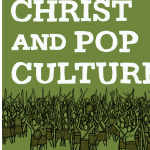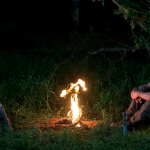On Sunday, ABC aired the second-season finale of its popular series Once upon a Time, with a third season confirmed for Fall 2013. Capitalizing on the recent vogue for updated fairy tale treatments, Once upon a Time is set in the quaint town of Storybrooke, Maine, a town with a curious secret: it is populated by residents of other fantastic realms who were transplanted into our world as part of a curse by the wicked queen, who rules the town as the ruthless Mayor Regina Mills (Lana Parrilla). She is opposed by Snow White (Ginnifer Goodwin) and Prince Charming (Josh Dallas), along with their daughter, Emma (Jennifer Morrison) and her son Henry (Jared S. Gilmore), while the manipulative Rumplestiltskin (Robert Carlyle) is always lurking in the corner, waiting to make a deal. In the first season, most residents could not remember their lives in fairy tale land, settling into mundane “real-world” lives (though never aging). In the second season, the dynamics have changed somewhat, and characters’ memories have been restored. Once upon a Time was created by the team of Edward Kitsis and Adam Horowitz, former staff writers of Lost, and along with casting several Lost alums and inserting in-jokes referencing that series, the show also follows an overall similar format: the main action occurs in our world, while we learn more about the characters’ true identities through flashbacks into fairyland.
Commenting on fairy tales in his essay “On Household Gods and Goblins,” G. K. Chesterton famously contends that “children are innocent and love justice; while most of us are wicked and naturally prefer mercy.” In The Uses of Enchantment, Bruno Bettelheim picks up on this thought and adds, “One may rightly question Chesterton’s belief in the innocence of children, but he is absolutely correct in observing that the appreciation of mercy for the unjust, while characteristic of a mature mind, baffles the child.” What Chesterton and Bettelheim both aptly note is that relatively few fairy tales are redemptive in nature. In the stark world of the traditional fairy tale, good and evil are clearly and sharply delineated categories. Cinderella is good and the wicked stepmother is…well, wicked. Snow White is good and the Evil Queen is…you guessed it, evil. Virtue is rewarded and vice is punished, and virtuous characters are basically intrinsically virtuous, identified as such even before their actual actions can manifest those qualities.
This binary pattern derives from the essential functions of most fairy tales. They can, for instance, serve as exemplary narratives, as ways for children to see virtue embodied, giving them a pattern to follow. Such stories provide a rubric according to which they can measure their own progress. Fairy tales also introduce children to a stable world, one in which evil is every bit as evident as in the real world but is consistently defeated by good. This stability creates a sense of peacefulness, of shalom (as the Old Testament would say), that may in turn allow them to develop in better psychic and spiritual health; it produces a foundational security to bulwark against the vicissitudes of seemingly arbitrary life.
All of which presents a striking conundrum to writers who seeks to produce an adult series about fairy tales: how do you create a compelling and mature narrative about stories whose characters are really types? Fairy tale heroes, heroines, and villains incarnate their roles perfectly, and yet in adult fiction, perfect characters are flat and uninteresting because we cannot relate to them. We are, as Chesterton noted, wicked, and our own narratives reflect that fact.
The writers of Once upon a Time circumvent this dilemma in several intriguing ways. One is by focusing attention on those fairy tale characters who do illustrate redemptive arcs. The first season and (briefly) the second season, for instance, involve the character of Pinocchio, one of the few “fairy tale” characters who begins wicked and is at last redeemed; indeed, those familiar with Carlo Collodi’s original 1883 The Adventures of Pinocchio know just how vile Pinocchio is until he gets to his happily-ever-after. Once upon a Time acknowledges Pinocchio’s dissolute youth, crafting a character who is haunted by his past failings and seeking to make amends, while sometimes prepared to adopt questionable means to do so.
A more frequent way that Once upon a Time creates redemptive character arcs is by introducing individuals who are not fairy tale characters. This is most obvious in Emma Swan. Though Emma is the daughter of Charming and Snow White, she has grown up since infancy alone in our world, and thus she has no conscious connection to the land of fairy. Her background gives the show’s writers many opportunities to depict a person whose flaws need to be overcome. In the first season, she wrestled largely with a skepticism born out of her difficult upbringing (or lack thereof), denying the existence of magic to almost absurd degrees as strange occurrences clustered around her. The second season—which has heavily emphasized themes related to family—has explored her abandonment issues in greater depth, her struggles to be vulnerable in loving even when she might be hurt. The end of the second season has also occasioned the arrival of several other “outside” characters, all of whom wrestle with personal demons that they drag with them to Storybrooke.
But perhaps the most interesting way in which Once upon a Time carves out room in the fairy tale tradition for the possibility of redemption comes in its treatment of the traditional heroes and villains. The show’s flashbacks provide complex backstories to the characters that give them more texture as people and have consequences that follow them into Storybrooke, especially now that the town’s residents all remember their original identities. Some “good” characters (e.g. Snow White, Belle) seem poised to travel dark paths. Meanwhile, the possibility of redemption or restoration is persistently dangled before the villains, who are perhaps the most layered characters of the series. Regina, the evil queen, seems often poised to repent, only to turn back farther into wickedness and self-delusion. Her evil is definitely her own, yet it also owes its presence in part to the connivances of her own manipulative mother Cora (Barbara Hershey), who had removed her own heart to protect herself from harm. Rumplestiltskin—known also as the Dark One in fairy tale land—is also played as the Beast juxtaposed with the Beauty (Emilie de Ravin’s Belle). By conflating those two fairy tale figures—a crafty trickster and a monster who becomes a prince—the show suggests that Rumplestiltskin may in fact be redeemed; yet like Regina, he resists virtue at the last minute in every case. The same is true of Captain Hook (Colin O’Donoghue), who (like almost every other character) has been wounded by Rumplestiltskin in the past. Indeed, perhaps the greatest suspense of Once upon a Time lies in wondering whether the malicious characters will remain wicked or at last be transformed.
For some avid Christian readers of fairy tales, this tweaking of the tradition may be off-putting, contending that the lines between good and evil characters in fairyland ought not be crossed, lest one violate their entire reason for being. Yet many of those same readers would commend the writings of Christian authors like George MacDonald, C. S. Lewis, or J. R. R. Tolkien, all of whom penned works that fall within the faery tradition but feature morally ambivalent—or at least imperfect—characters. Exemplary writing may have its place in the instruction and upbringing of children, yet sooner or later, we must become conscious that we are all wicked. We are not the princes or princesses; we are the villains who only enter the kingdom through an act of cosmic redemption. And surely there is room in fairyland for stories to remind us of that.











